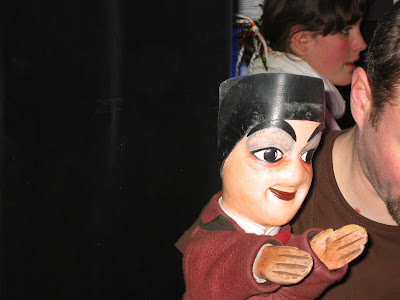BEST EMPEROR
There was no contest in this category, really. And we are quite certain that we would arrive at the same decision even if we did not face being thrown to the lions at the first sign of the Emperor’s displeasure. For how we all marvel at Tiberius Claudius Nero and his ability to govern us all so impeccably — and still find time to write all those fascinating histories and memoirs! We must remember to buy a copy of his latest, The Etruscans. It’s been a good year overall for the Emperor, who was recently declared a god in Britain — there’s a feather in your cap! Or it would be, if the Emperor actually wore a cap. (He still prefers wreaths. And very handsome they are.)
WORST EMPRESS
A much tougher call, as the Palatine was rocked this year by II still-growing scandals. The Dowager Livia is believed to have poisoned roughly half her own family. Will this affect her campaign to be declared a goddess? Entrail-readers say it’s too soon to say. Meanwhile, as if problems with his grandmother weren’t bad enough, our Beloved Emperor had to contend with the pubic spectacle (yes, you read that right) of his wife, Messalina. Is there anyone (besides the Emperor himself) she hasn’t had sex with?
BEST POLITICAL ASSASSINATION
In a crowded year, with many fine candidates to look back on, we opt for the brutal murder of Blutus Blutarscinus Belusinus, whose opponents in the Senate glutted him on food and drink ceaselessly for VII days upon the Lupercal, then burst him like a pimple. Sure, poison and daggers are quick and discreet, but sometimes it’s the big, splashy death that really conveys your message.
BEST GLADIATOR
Drusillus of Tarsus was a sentimental favorite of ours — until he lost his arm in combat and had to be retired. We like to think that there’s a little bit of Drusillus in every one of the lions fighting in the arena today. And, come to think of it, there is.
BEST GRAMMARIAN
We were going to award a prize to Romulus Romule Romuli, but he declined it.
BEST SIBYL
Diophobe of Cumae sees all things, past and present! And she says that stola hemlines will go higher next season.
STRANGEST INTERNATIONAL NEWS
Those crazy Jews! They’re still arguing about some eccentric rabbi whom Pontius Pilate crucified several years ago. Is that kosher? (And if it is, what does it mean?) Meanwhile, Diophobe predicts that Isis Worship will be the next big trend in our temples.
BEST ORGY
No question — it’s the party at Trimalchion’s house. Started on the calends of Junius and still going strong! CCLVI guests! Musicians! Dancing girls! We’ve lost track of the roast oxen and heaping piles of hummingbird tongues! What a blowout! (Speaking of which, Trimalchion renovated his vomitorium, just in time for the party, and it looks fabulous.)
A CONTEMPORARY EDITORIAL NOTE: Well, it does seem as if year-end thumb-sucking “Best & Worst” and “Top Ten Trends” rundowns have been going on since the dawn of time, and each year there are more and more and more of them. You can’t pick up a paper without the artificial nostalgia rubbing off on your fingers. These articles do have one asset: they make me look forward to February.
Read more!














































